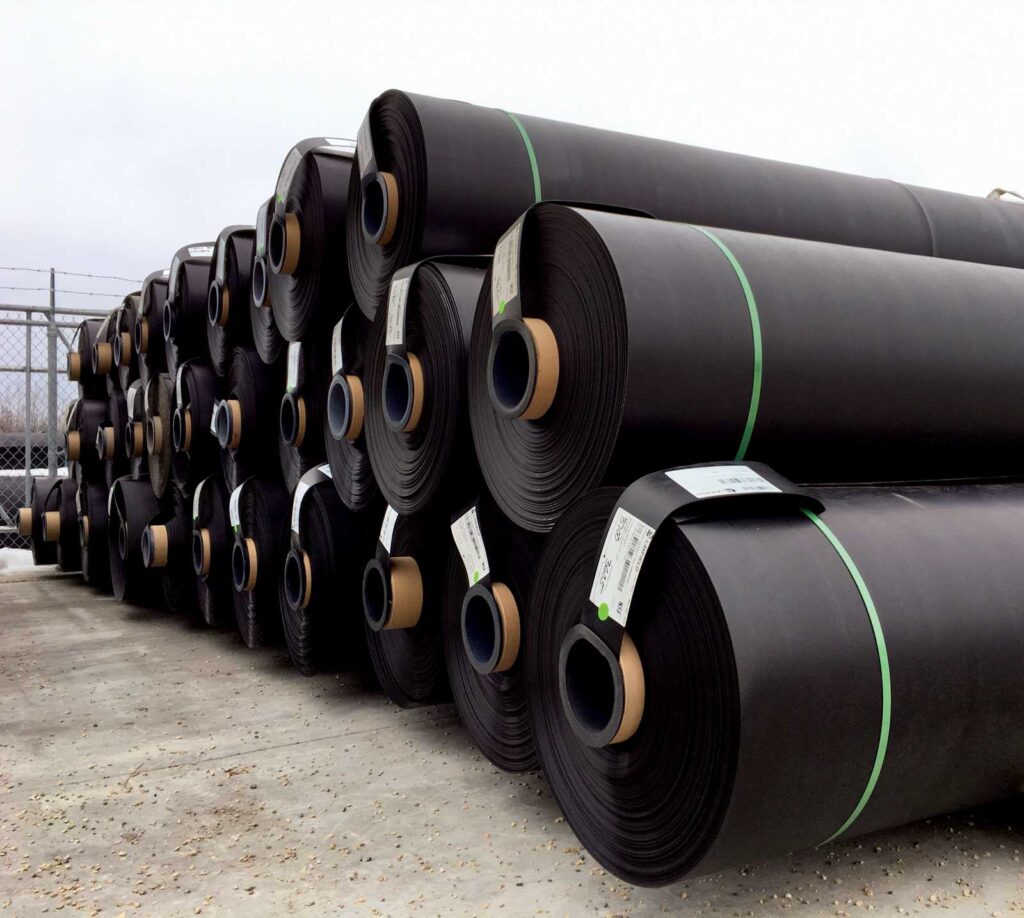What are the quality certification certificates for geomembranes?
ISO 9001: ISO 9001 certification is an international standard for quality management systems, proving that manufacturers meet the requirements of international standards in terms of quality management. This certification ensures that the manufacturer has established a complete quality management system and process, and strictly controls and supervises the production process.
ISO 14001: ISO 14001 certification is an international standard for environmental management systems, proving that manufacturers meet the requirements of international standards in terms of environmental protection and sustainable development. This certification ensures that manufacturers comply with environmental regulations, reduce environmental impact during production, and take steps to reduce resource consumption and waste generation.
CE certification: CE certification is the European Community’s product qualification mark, proving that the manufacturer’s products comply with relevant European regulations and standards. For geomembranes, CE certification usually covers the performance, safety and quality requirements of the product.
ASTM certification: ASTM certification is a certification by the American Society for Testing and Materials for the performance and standards of materials and products. For geomembranes, ASTM certification usually covers testing requirements for the physical properties, chemical properties and durability of the material.
GAI-LAP certification: GAI-LAP (Geosynthetic Accreditation Institute – Laboratory Accreditation Program) certification is a certification program for geosynthetic materials (Geosynthetics) laboratories.
This accreditation ensures that the laboratory has the technical capabilities and quality management systems required to conduct testing and evaluation of geosynthetic materials.

What are the quality tests for geomembrane?
Thickness measurement: Measure the thickness of the geomembrane to ensure it meets specified specifications.
Strength test: Test the tensile strength and tear strength of the geomembrane to evaluate its tensile and tear resistance. Common testing methods include tensile testing and tear testing.
Elongation to rupture test: Test the elongation to rupture of a geomembrane, which is the maximum length it can stretch before rupture, to evaluate its ductility.
Elongation index test: Measure the elongation index of the geomembrane under certain conditions to evaluate its stress cracking resistance.
Low temperature flexibility test: Test the flexibility and cold resistance of the geomembrane at low temperatures to evaluate its reliability in cold environments.
Oxygen transmission rate test: Test the oxygen transmission rate of the geomembrane to evaluate its ability to block gases.
Moisture transmittance test: Measure the transmittance of water in the geomembrane to evaluate its waterproof performance.
Chemical Stability Test: Test the chemical stability of the geomembrane in a specific chemical environment to evaluate its corrosion resistance.
UV Aging Test: The geomembrane is exposed to UV radiation to evaluate its UV aging resistance.
Salt water immersion test: Soak the geomembrane in salt water to evaluate its corrosion resistance in a salt water environment.

Is the thicker the geomembrane the better for preventing leakage?
Within a certain range, the greater the thickness of the geomembrane, the better the anti-seepage capability will be. Thicker geomembranes can provide higher resistance to penetration and anti-seepage performance, reducing the penetration of moisture or other liquids.
However, the thickness of the geomembrane is not as thick as possible, because excessive thickness may cause the following problems:
Increased cost: The greater the thickness of the geomembrane, the required materials and costs will also increase. Especially in large-scale engineering projects, cost factors may become one of the considerations.
Difficulty Installation: Thicker geomembranes may be more difficult to install. It may require more power and more workers, increasing project complexity and cost.
Reduced puncture resistance: Thicker geomembranes may not perform as well in terms of puncture resistance. In some engineering projects, such as road construction or landfills, the geomembrane’s resistance to damage from sharp objects or sharp gravel at the bottom needs to be considered.
Therefore, when selecting the thickness of the geomembrane, factors such as specific application scenarios, engineering requirements, and budget constraints need to be comprehensively considered.
Engineers or designers will consider multiple factors based on the actual situation to determine the most suitable geomembrane thickness to balance anti-seepage performance, cost and construction feasibility.
In addition, along with the thickness of the geomembrane, other factors such as soil conditions, water pressure, temperature changes, etc. need to be considered to ensure the reliability of the anti-seepage system.

